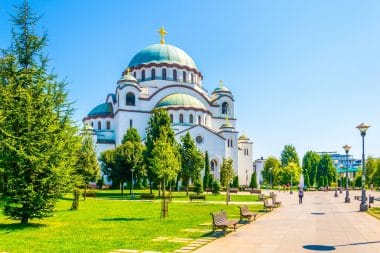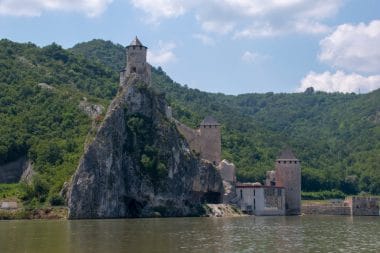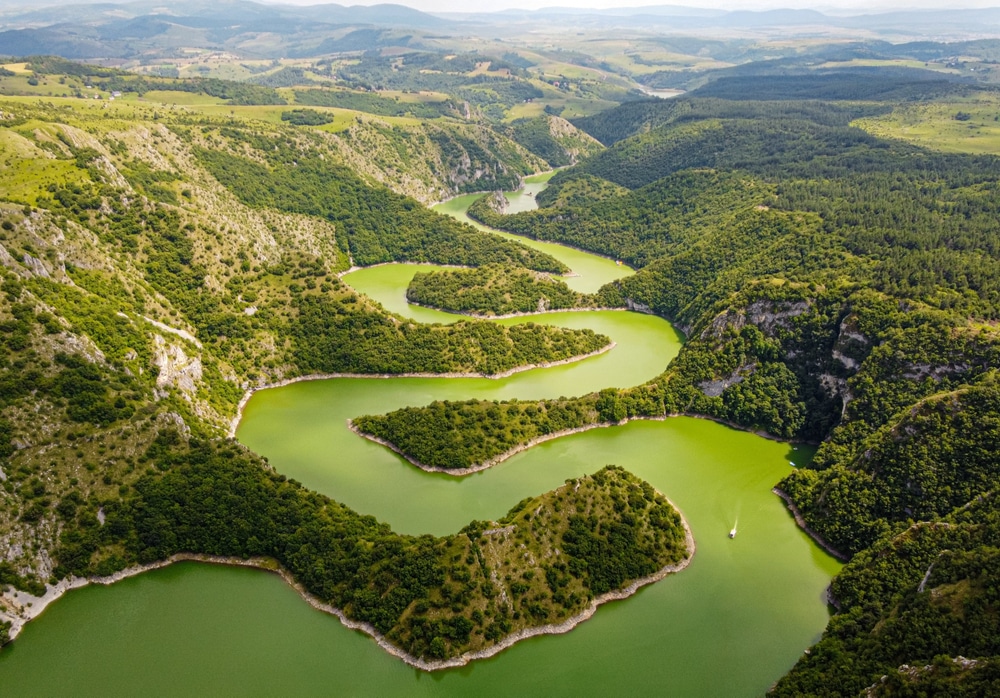Serbia is located in southeastern Europe on the Balkan Peninsula. The country has around 6.9 million inhabitants. Belgrade is the capital and largest city of the Balkan state. A continental climate awaits you on a holiday in Serbia. The country is becoming increasingly popular with tourists – in 2019, the country received around two million tourists. The most popular highlights for Serbia holidaymakers were the Serbian capital, the national parks, lakes, various major cities and imposing fortresses. Over 8% of Serbia’s total area is under nature conservation.
Belgrade – The capital of Serbia

The Serbian capital Belgrade is located in the northern part of the country. Belgrade has around 1.3 million inhabitants, making it one of the largest cities in Southeast Europe. Belgrade is of central importance for the country’s economy and culture. During the 20th century, Belgrade was also the capital of the Kingdom of Yugoslavia.
One of the landmarks is the Belgrade Fortress. The fortress was built during the 15th century and expanded several times in the following centuries. Parts of the fortress were built as early as the 3rd century. The structure is located on a hill that is 125 meters high. From the observation deck you have a unique view of the city. The Kalemegdan Park, which is located around the fortress, is ideal for walks.
The Cathedral of St. Sava is also worth seeing. The cathedral, which was built in the neo-Byzantine architectural style, is one of the world’s largest Orthodox places of worship. The church is located on the 134-metre-high plateau of Vračar. The cathedral has a height of around 77 meters and was opened in 2018 after 92 years of construction. With a built-up area of 4830 m², it is one of the largest Orthodox houses of worship in the world. Another attraction is the St. Mark’s Church. A Serbian Orthodox church built in the neo-Byzantine style.
One of the most famous streets in the Serbian capital is Knez Mihailova ulica. A variety of shops, restaurants and cafés await you in the shopping street. The road stretches for almost 800 meters. An ideal starting point for a walk through the city center of Belgrade is the Republic Square.
Another highlight in the city is the Belgrade Zoological Garden. The zoo, which opened in 1936, is one of the oldest zoos in Southeast Europe. In the zoo, which is located not far from the city center, you can see lions, buffaloes and tigers, among others, on an area of around 7 hectares.
You have a fascinating view of the region from the Avala. The mountain is 511 meters high and is located just under 20 kilometers south of Belgrade. You can reach the mountain summit via a hiking trail.
National Parks in Serbia

In the eastern part is the Đerdap National Park. The area of the national park covers an area of over 60,000 hectares. Fascinating gorges and rivers await you. The Đerdap Gorge is one of the largest gorges in Europe. In addition, the flora and fauna in the Đerdap National Park is impressive. Tours of the national park allow you to spot wolves, lynxes and brown bears. The unique lake “Iron Gate” is also located in the national park. The largest lake in the country was created in 1972.
In the west of Serbia lies the Tara National Park. It was founded in 1981 and has an area of over 37,500 hectares. During a hike through the national park, you can see, among other things, the Serbian spruce, a rare plant species.
Zlatibor Mountains
In the western part of Serbia lies the Zlatibor Mountains. The mountains are ideal for cycling and hiking. In addition, the mountains are characterized by their climate. The highest mountain in the mountain range is Tornik, which is 1496 meters high. During the winter months, the mountains are ideal for skiing.
Museums in Serbia
- One of the most popular museums in Serbia is the National Museum of Serbia. The museum was founded in 1844. Over 400,000 exhibits on Serbian art and archaeology can be explored in the museum’s premises.
- The Nikola Tesla Museum is located in the Serbian capital. The museum was built in memory of Nikola Tesla, a Serbian inventor.
- Information about the history of the country can be found in the Museum of Vojvodina. The museum is located in Novi Sad, the second largest city in the country. Over 400,000 exhibits on the history of the region are on display in the museum.
- One of the most famous art museums in Serbia is the Museum of Contemporary Art in Belgrade. Works of art from Yugoslavia and Serbia from the 20th century are exhibited in the museum, which opened in 1965.
- If you want to learn more about the history of Serbia and Yugoslavia, visit the Museum of the History of Yugoslavia. The museum opened in 1996. The House of Flowers is also part of the museum.
- The aviation museum is also worth seeing. In 1957, the museum, which is located not far from the international airport, was founded. In the museum, you will have the opportunity to discover airplanes and learn more about aviation in Serbia.
Major cities worth seeing
The second largest city in Serbia is Novi Sad. The city has around 230,000 inhabitants and was founded in the late Middle Ages. During a visit, you can expect to visit the Serbian National Theatre, the imposing Petrovaradin Fortress and the Danube Park, among others.
In Niš, the third largest city in Serbia, there is the Ćele Kula tower, which is well worth seeing. You can also visit the fascinating archaeological site “Mediana” in the city.
Other cities worth visiting are Kragujevac, Subotica and Zrenjanin, where the largest bog in Serbia, Carska Bara, is located.


